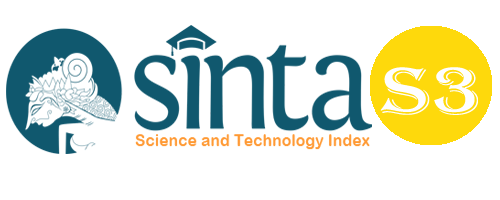Teacher’s Use of Power Bases as Perceived by ELT Students in Tertiary Education
Abstract
This study attempts to examine Power relations perceived by students in classroom interaction in tertiary education Context. Good classroom interaction is perceived as one when all the students are actively engaged with what is happening in the classroom. This means that students are accounted for to be responsible for their own learning. A mixed-method was carried out by exerting questionnaires and focused interviews. The perception questionnaires were given to 40 students majoring in English Literature at Fajar University of Makassar on the Students’ perception toward power in the classroom context. In order to have more elaborated information about power relations in the classroom context, the researcher employed focused interviews with 10 students who were chosen randomly. The findings suggest that there are several things influenced power and solidarity in EFL classroom interaction, the majority of the students perceived that their teacher is a dominant figure in the classroom. Nonetheless, the students do recognize that when teachers are being dominant; it means they want everyone to equally participate in the class. Students also affirm that confidence is needed to be able to participate in classroom activities and that support from their classmates is influential to some extent.
Keywords
Full Text:
PDFReferences
Brown, Roger, and Albert Gilman. (1960). The Pronouns of Power and Solidarity. Style in Language Cambridge, Mass: MIT Press, T. A. Sebeok, 253-276.
Coulthard, R. M. (1985). An introduction to discourse analysis. London: Longman.
Chesebro, J. L., & Martin, M. M. (2010 ). Message framing in the classroom: The relationship between message frames and student perceptions of instructor power. Communication Research Reports, 27(2), 159-170.
Dangel, J.R. and T.R. Durden. (2010). The nature of teacher talk during small group activities.
Finn, A. N. (2012). Teacher use of prosaically and antisocial power bases and students’ perceived instructor understanding and misunderstanding in the college classroom. Communication Education, 61(1), 67-79.
Ramos, B. (2004). Power Relation in the EFL class through oral interaction (Master's thesis),Universidad Detrital Francisco José de Caldas, Bogotá.
Sterling, Polly. Identity in Language: An Exploration into the Social Implications of Linguistic Variation. Texas: A&M University
Hurt, H.T.,Scott. D&McCroskey,J.C. (1978). Communication in the classroom. Reading MA: Addition-Wesley.
Mat Zin, S., N.F.H. Nik Jaafar, N.E. Ngah, R. Ismail, N. Ibrahim, K. Jusoff and A. Salleh. (2011). Ingratiation and the use of power in Malaysian secondary Schools, World Applied Sciences Journal, 12: 10-14.
Mendez, Tatiana. (2012) Exploring Students’ Power and Solidarity Relation in an EFL Classroom. Issues in Teachers’ Profesional Development, Vol. 4, Issue 1, page 173-185.
McKeachie, W. J. (1990)."Research on College Teaching: The Historical Background." Journal of Educational Psychology, 82 189-200.
Petress, K.( 2006) An operational definition of class participation, College Student Journal, 40, 821823. (ASO)
Saragih, S. (2019). The Relation between the Empowerment of Teacher's Meeting and Achievement Motivation on Teacher Performances in MTsN 3 (Islamic Junior High School 3) Simalungun. Budapest International Research and Critics in Linguistics and Education (BirLE) Journal. p. 115-114.
Sequeiros, L. (1997). Educar para la Solidaridad. Barcelona: Octaedr
Smith, D. G. (1977) "College Classroom Interactions and Critical Thinking." Journal of Educational Psychology, 69 180-90.
Tannen, D. (1996). Researching gender-related patterns in classroom discourse. TESOL Quarterly,. 30(2), 341-344.
DOI: https://doi.org/10.33258/birci.v3i2.1002
Article Metrics
Abstract view : 154 timesPDF - 134 times
Refbacks
- There are currently no refbacks.

This work is licensed under a Creative Commons Attribution-ShareAlike 4.0 International License.

This work is licensed under a Creative Commons Attribution-ShareAlike 4.0 International License.

_.gif)

















_.gif)



